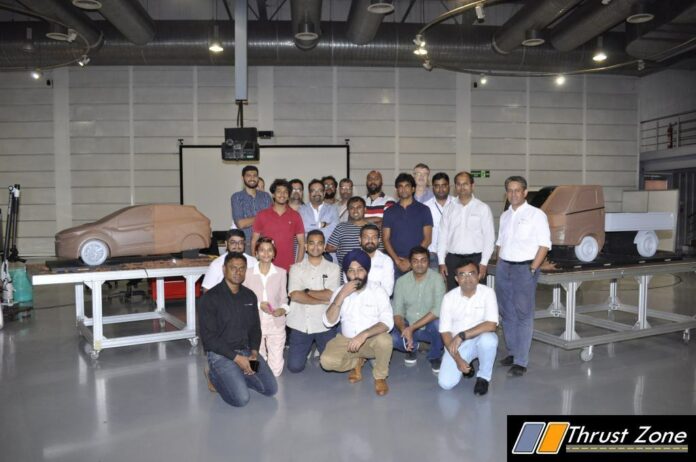With design studios across Pune (India), Coventry (UK) and Turin (Italy), Tata Motors design team works in synergy as one unified organization across geographies. The Pune studio comprises of about 65 individuals, who cater to both passenger and commercial vehicle designing. Situated in the domestic market, the studio in Pune has an advantage of being at the pulse of where the company sells its highest volumes, which contributes to the studio’s understanding of ever-evolving trends. Additionally, ‘productionisation’ of all projects takes place here, owing to its proximity to the manufacturing plants and suppliers.
Some of the noteworthy facilities of the Pune studio include:
● In-House Clay and Hard Model Milling
● Rapid Prototyping across technologies
● In-Studio Paint Shop supported by the (larger) ERC Proto Paint Shop
Pune studio has a Colour-Materials-Finish (CMF) Team that studies and anticipates broad trends. This team primarily provides insights and analyses on the interior and exterior of a vehicle, product materials and finishing elements; based on a close observation of current and anticipated design and lifestyle trends. This studio also has a dedicated Design Quality Team that works very closely with suppliers and the Tata Motors Quality-Control Department.
Tata Motors Design Approach
Each of Tata Motors’ studios is capable of delivering a project on an end-to-end basis i.e. beginning with concept sketches and concluding with the data release for production tooling. With all studios being involved in projects from all the 3 Business-Units – Passenger, Commercial and Electric, the studios have access to both – in-house and external cost-effective design-services ecosystems.
One of the many collaborative aspects of this design network is the ability of one studio to bolster design functions in another studio in case of a heavy workload. Each studio brings together a unique understanding of design – both automotive and in the broader context, while establishing and interpreting existing and future market trends. This extensive process makes the interpretation and understanding of product briefs and the quality of the design solution richer and truly unique to Tata Motors.
The design development cycle that is practiced in Tata Motors’ studios involves the following:
● Concept Sketches
● Digital Data Generation of varying levels of maturity, from concept to production.
● Clay Hand-Sculpting
● Clay & Hard Model Milling
● Clay & Hard Model Painting
● Laser Scanning
● Rapid Prototyping
● Head and Tail Lamp Aesthetic Proto Build with Production-Level Detailing
● Colour, Materials, Finish & Grain (CMFG) Design + Detailing & Forecasting
● Design Productionisation/Realisation & Design Perceived Quality
The journey of a product from its initial to its final stage: At a glance
In terms of the overall process, all projects begin with a design brief that is collaboratively worked on by the design, product planning, engineering and marketing teams prior to being approved by senior management. This is typically followed by a period of elaborate sketch work wherein several options that are generated are shortlisted to promising ones, which are then promptly converted to rough digital data.
This data is then fed into the milling machines to create the first clay ‘volume’. This volume is meticulously worked on by hand, so that it is in alignment with the sketch-based design intent. The final clay model, once approved, is then laser-scanned to be taken back into the virtual environment and converted to digital data that is eventually released for manufacturing.











